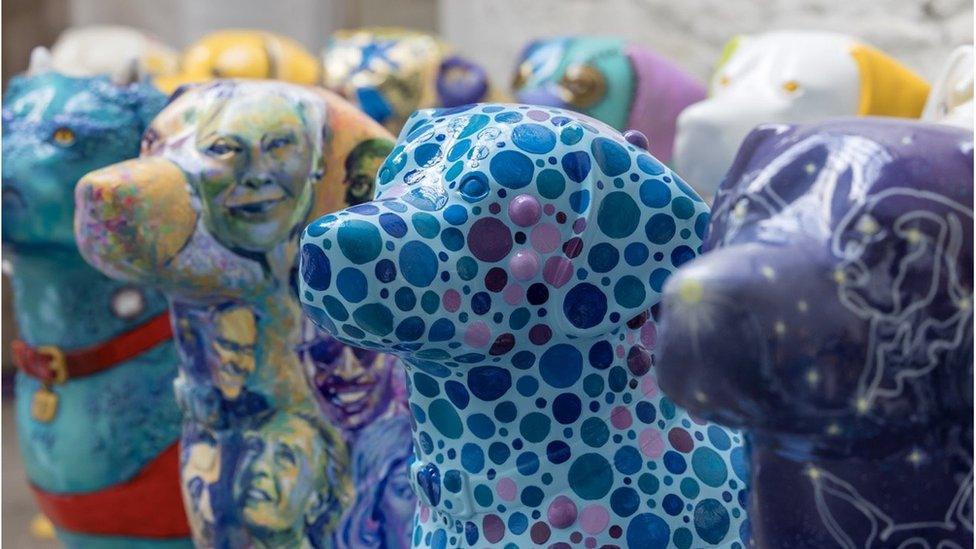A giant cat and a dead bird: London's alternative animal trail
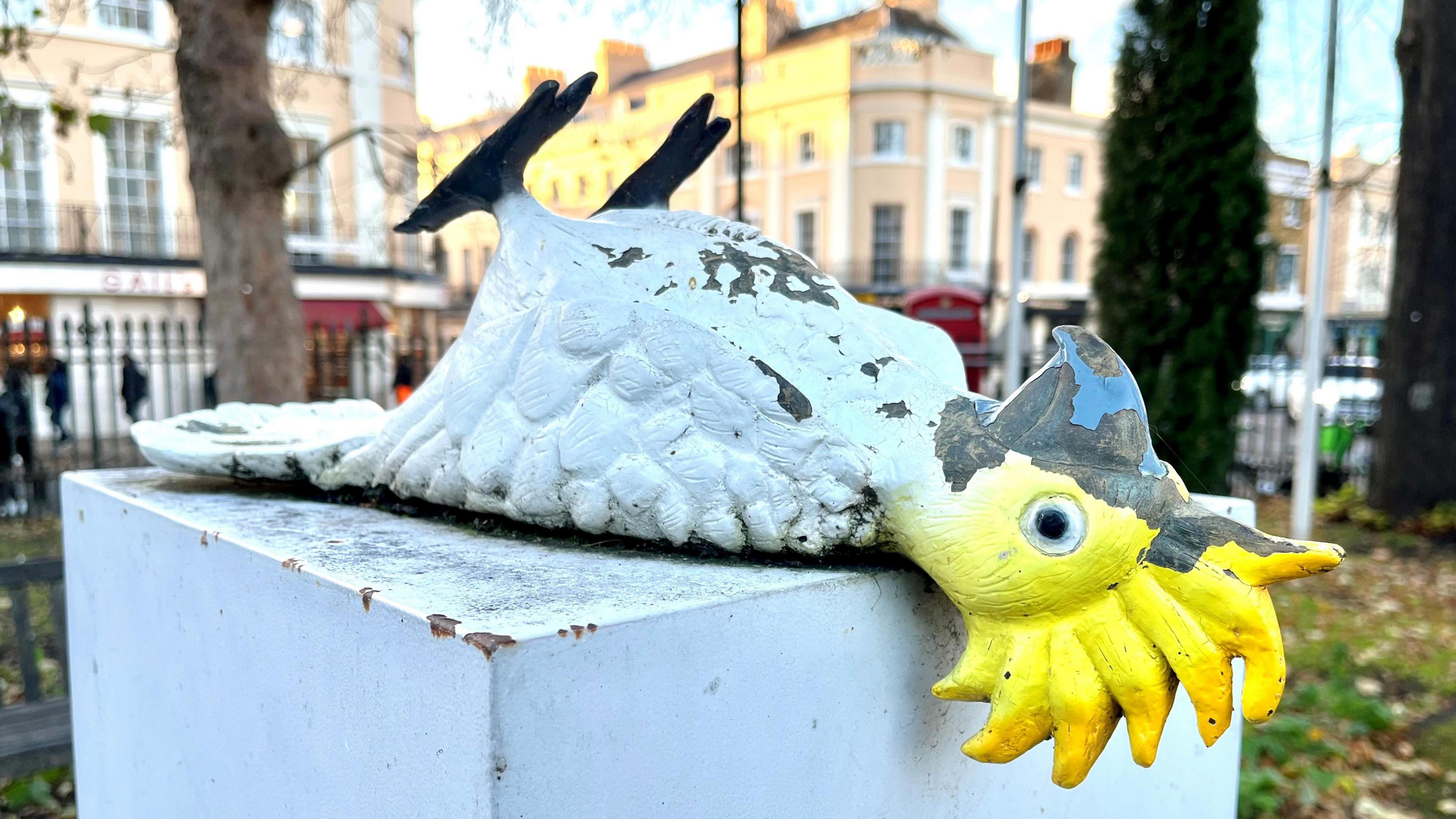
"Remarkable bird the Norwegian blue; beautiful plumage"
- Published
Back in August the world got a little giddy for nine days when elusive artist Banksy dotted animal stencils around London.
The assortment of goats, monkeys and piranhas added to an already substantial menagerie of artwork creatures that can be found across the capital, from rampaging tigers and gigantic cats to bothered dolphins and a dead cockatoo.
So where can you find some of these beasts and why were they created?
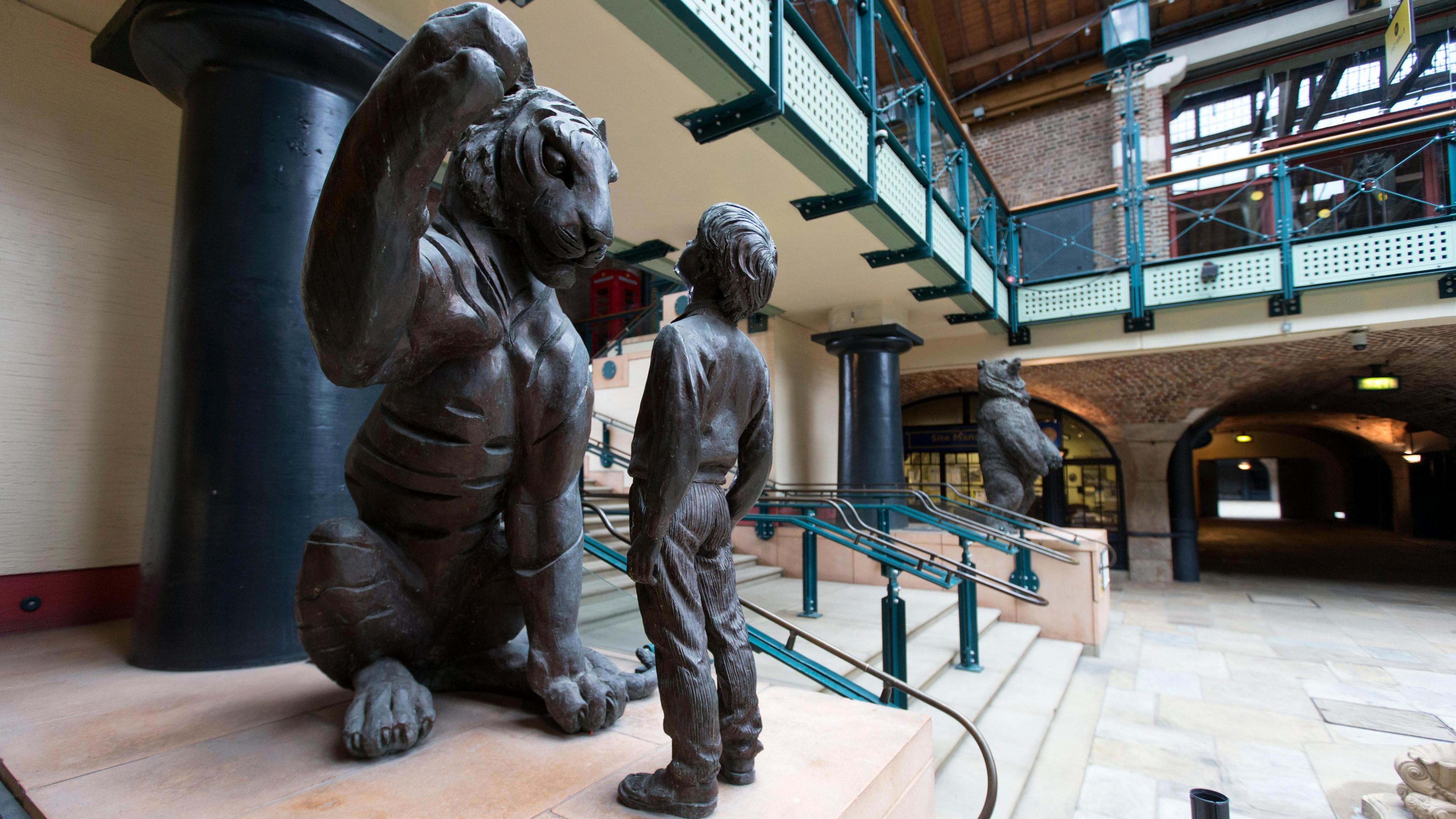
Tony the tiger was unimpressed when a small boy said he didn't care for Frosties
Let's first go to Tobacco Dock in Wapping, where a small boy came to regret trying to pet a Bengal tiger that was having a bad day.
On 26 November 1857, exotic pet store owner Charles Jamrach was taking in a new shipment of beasts when a large tiger broke free of its cage and took a wander through the East End of Victorian London.
Accounts differ about what happened next but the story tends to go that the big cat approached a young boy who thought he'd give the big furry moggy a stroke, only to be picked up in its jaws and carried off.
Jumping into action, Jamrach caught up with the pair and wrestled with the tiger in an attempt to release the boy, before another man turned up with a crowbar and clouted the beast over the head until it opened its mouth.
The boy was taken to hospital where he was said to have miraculously only suffered minor injuries. The tiger, meanwhile, was sold to a menagerie in the West Midlands, where it again proved its cage-breaking skills by smashing into the one next door and killing a lion.
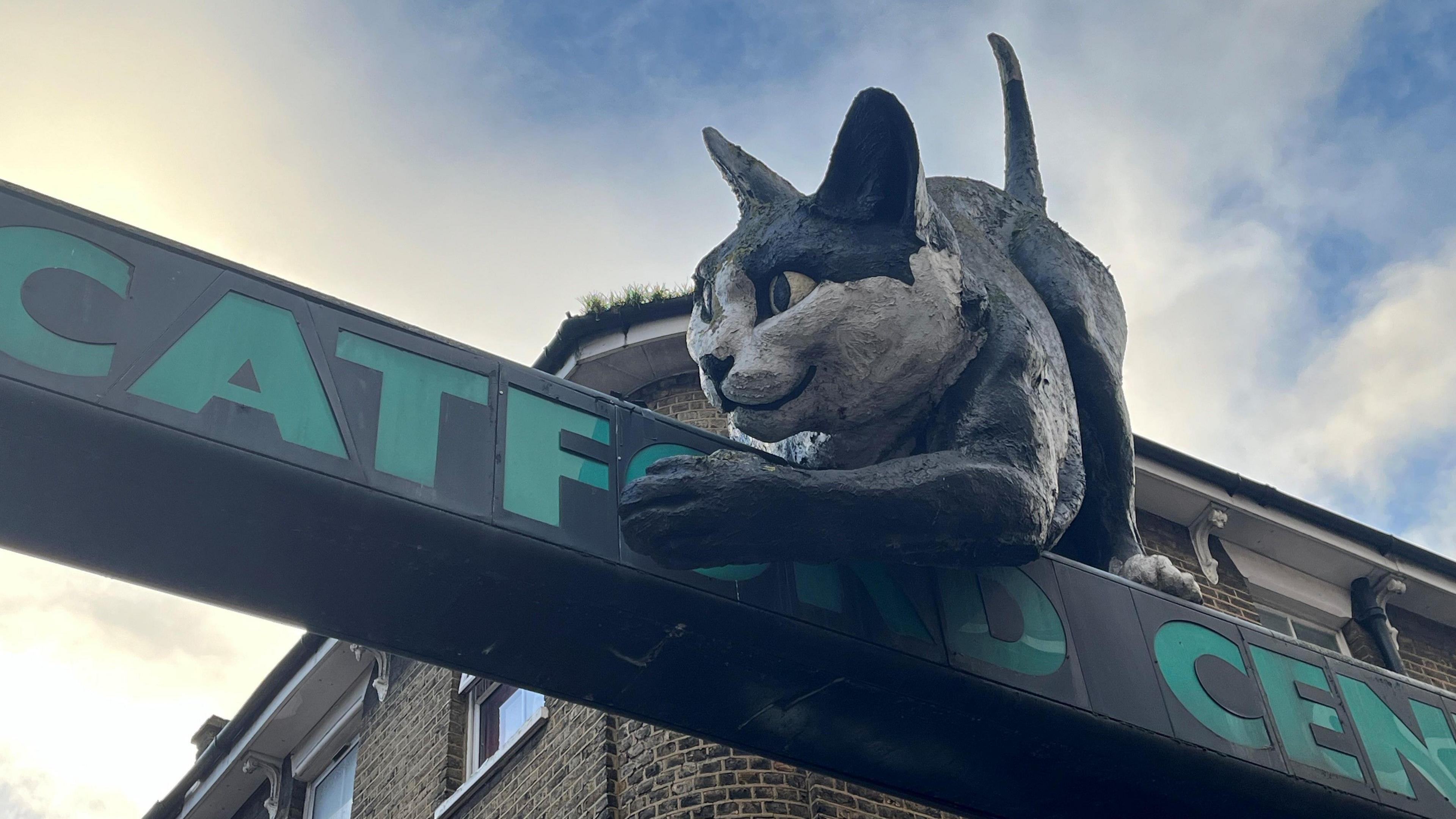
Clearing the Catford cat's litter tray is likely a multiple-person job
If we're talking big cats it seems only right to also mention a certain one in south-east London - the Catford Centre cat.
Playfully perched - and these days a little mossy - this fibreglass fur-ball appeared in the mid-1970s as the shopping precinct was being redeveloped.
There seems little reason for its creation beyond the fact that Catford has the word "cat" in it.
However, that hasn't stopped the feline turning into a local icon that is impervious to any attempts to remove it - the most recent effort was in 2017, external - and has such status a replica tops Catford's Christmas tree.
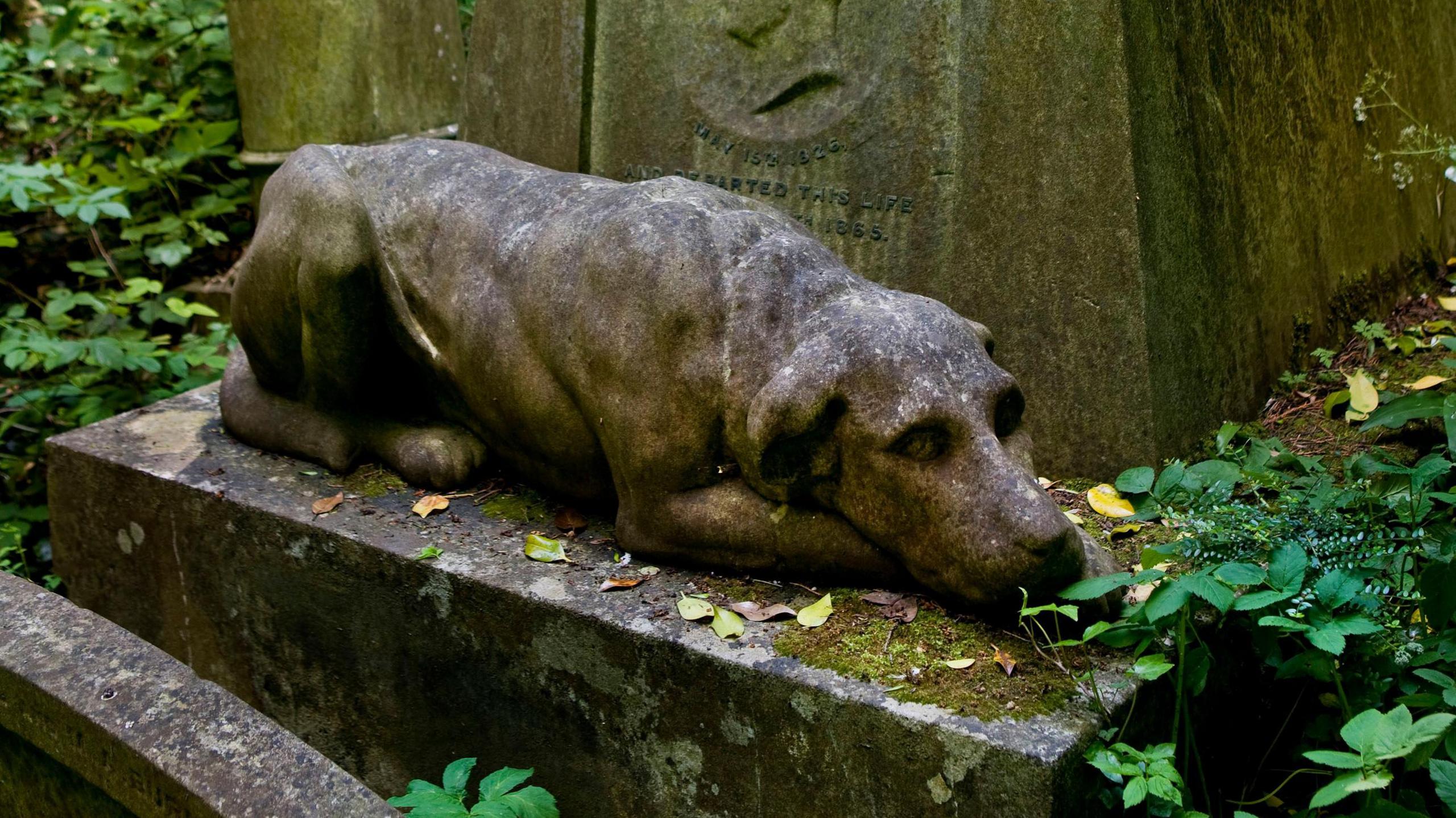
It's a dog's life
With so much cat chat going on, it seems only fair to give dogs a mention.
For this we head north to Highgate where one patient pooch has been loyally guarding its owner's tomb for nearly 160 years.
The mastiff in question belonged to Tom Sayers, Britain's last bare-knuckle champion, who was known as the Little Wonder due to his diminutive size and the fact he only ever lost a single bout - a brutal 61-round encounter.
His final fight took place in April 1860. Parliament business closed early that day so MPs could get to it. The outcome - a controversial draw in the 37th round as a result of the crowd invading the ring after two hours of fighting - was even followed by Queen Victoria.
Sayers died in Camden aged 39 five years later and over 100,000 people were said to have lined the streets as the cortege headed from his home to Highgate Cemetery.
His pet mastiff, which ironically went by the name of Lion, rode in an individual open carriage behind the coffin and was the funeral's chief mourner.
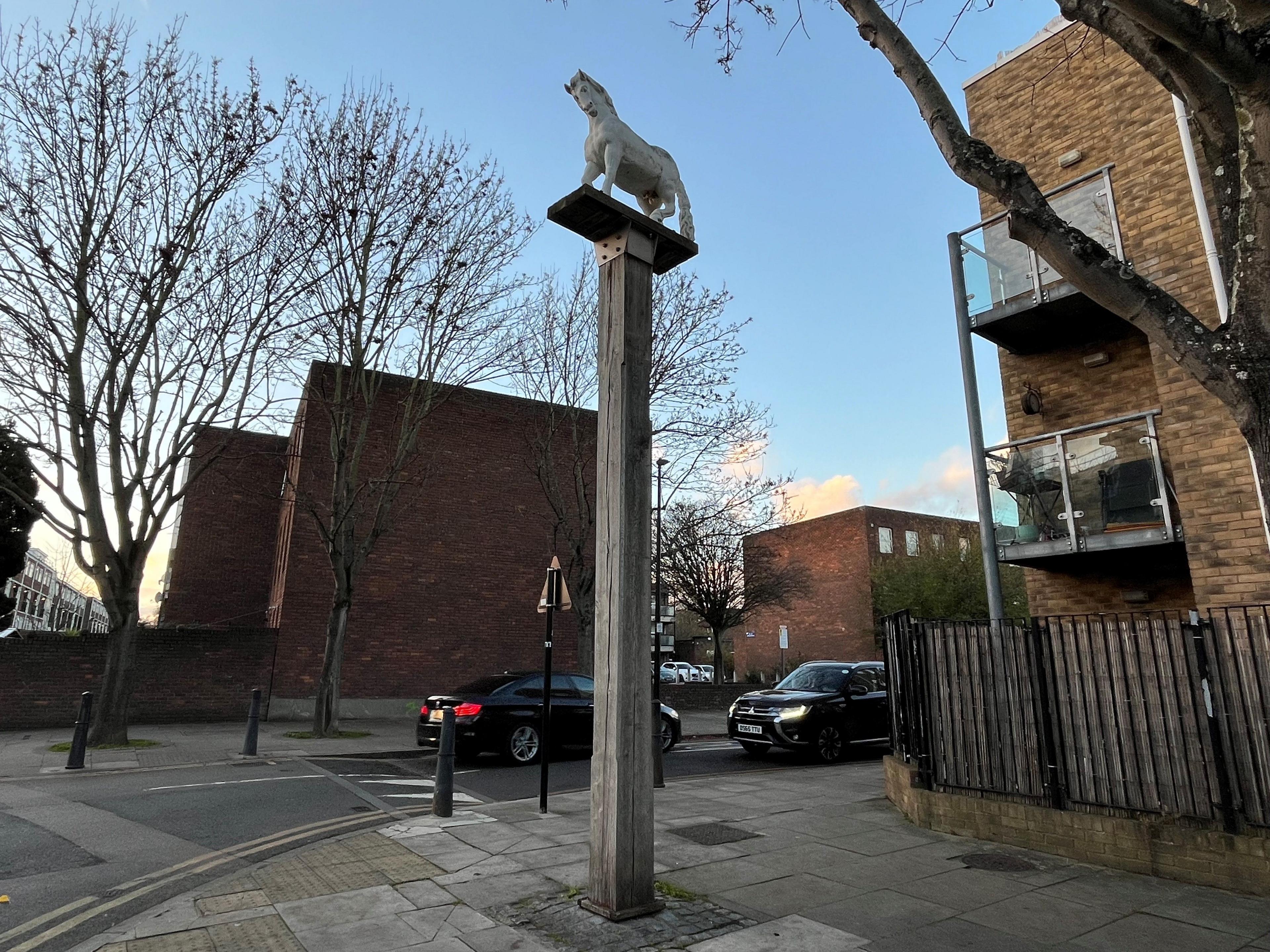
Now where did I park the horse?
Let's move on to horses and to Poplar where a large white nag stands atop a tall wooden post beside a block of flats.
The wooden carving dates back to the 18th Century when it was erected outside the White Horse pub - a former drinking establishment with a colourful history.
In the 1730s, it was taken over by a Mr and Mrs How. They had met in their teens and lived happily together for nearly 35 years, running several inns and becoming a pair of popular Poplar publicans.
But following the death of Mrs How, an attempt was made to blackmail her husband James - because James How's real name was actually Mary East.
The blackmailers, one of whom knew Mary when she was young, demanded money to stop them revealing this secret. However, the pub landlord appealed to locals who helped expose the extortionists and they were arrested and put on trial.
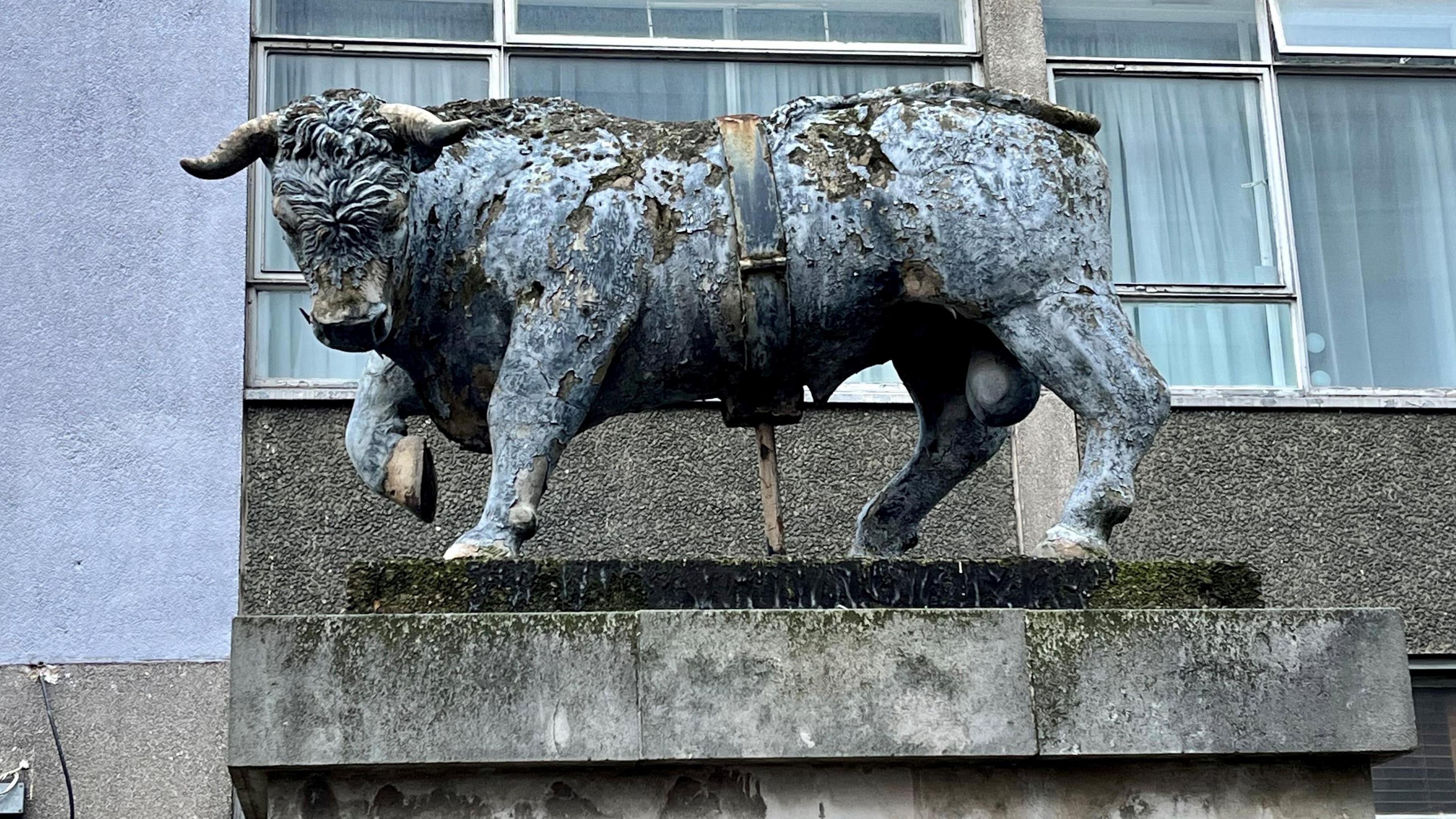
Noah required a very big boat
Sculpted signs of other long-gone pubs provide more animal artistry around the city.
One such example is behind some temporary fencing in Hammersmith where a large black bull stands on a plinth, seemingly ready to charge.
Thought to have been made in the 19th Century, it was once above the entrance to the Black Bull tavern in Holborn - a pub which gets a mention in Charles Dickens's Martin Chuzzlewit - but was moved out west in 1904 by the solicitors Messers Bull and Bull to graze above their office door.
With the pub and offices no more, these days it can be found beside a Premier Inn.
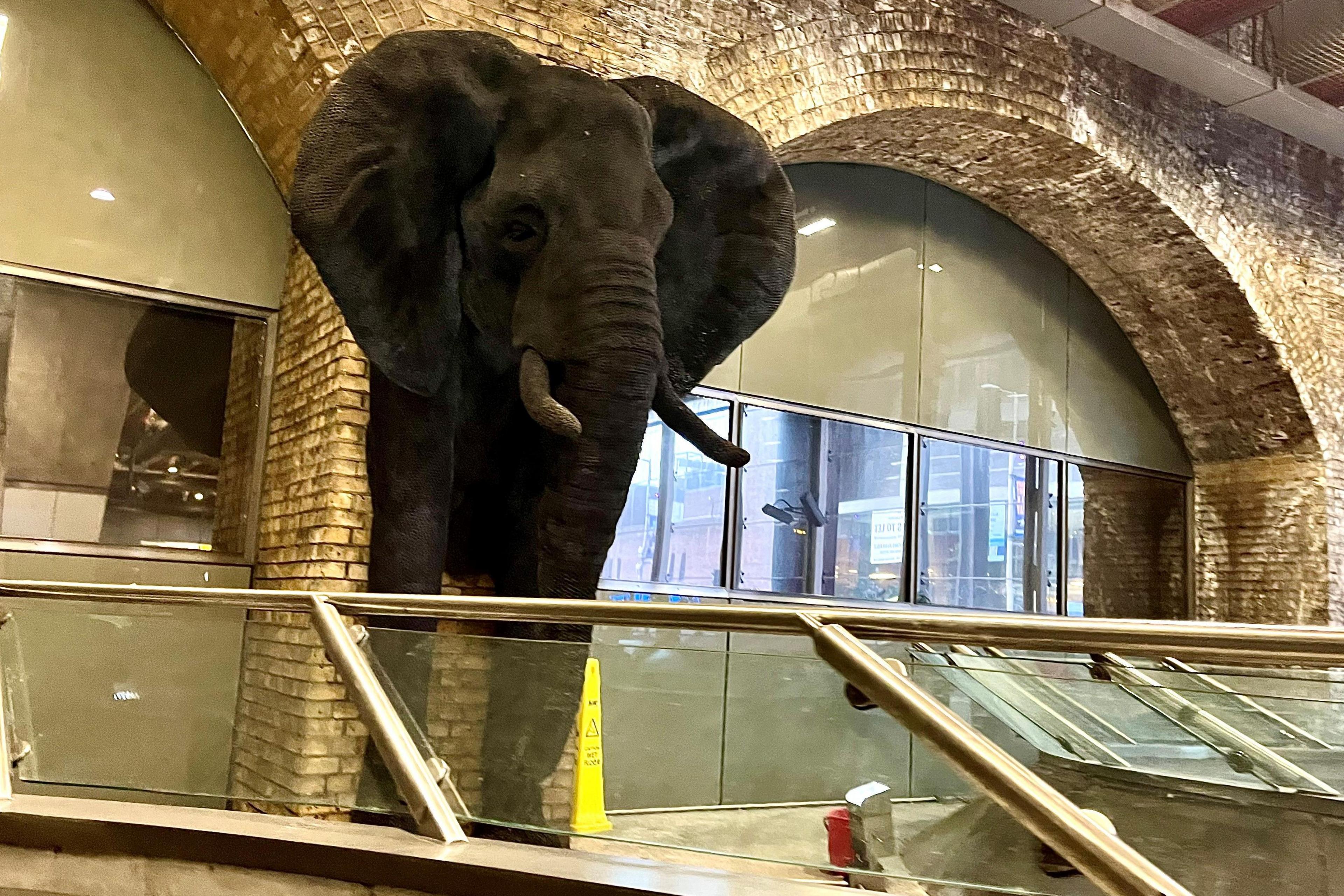
A trip to Waterloo station can be a bit like playing a game of Jumanji
Waterloo station may not be known for its wildlife but go towards one set of escalators and you'll spot a large elephant emerging out of the wall.
Created by artist Kendra Haste, it was originally part of an exhibition at Gloucester Road Tube station before migrating to its current location, where it is said to be a nod to the former Astley's Amphitheatre.
Claimed by many to be the world's first modern circus, Philip Astley opened a venue on the site of nearby St Thomas' Hospital in 1768, where punters could see jugglers, acrobats, horses, clowns - and of course elephants.
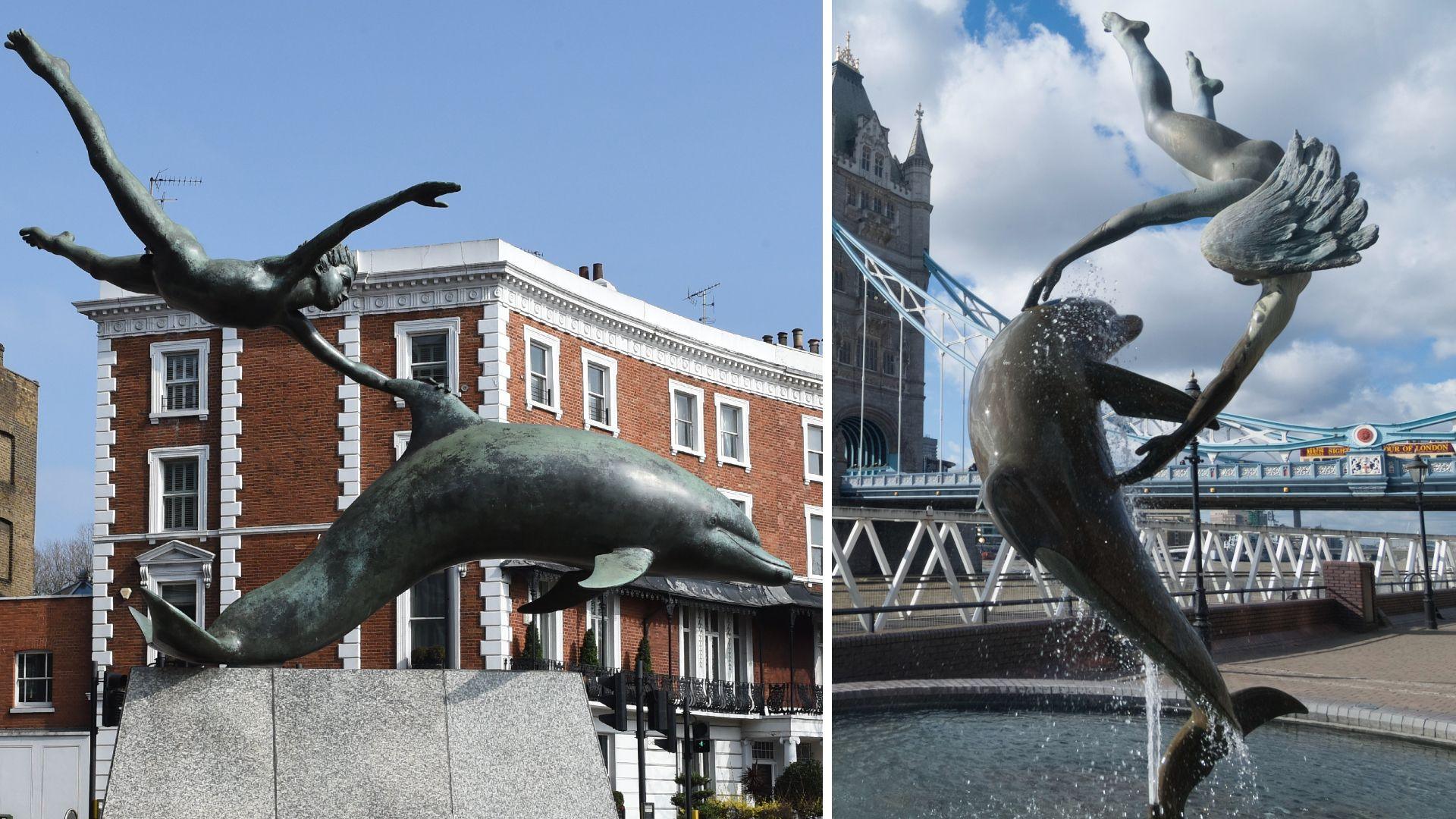
International hug-a-dolphin day never really caught on for some reason
Next its away from the big top and into the water. If you ever wanted to see a representation of a small child pestering a dolphin, then London is the place for you.
Over by Albert Bridge a young boy is being dragged along as he clutches a dolphin's dorsal fin, while near Tower Bridge a girl appears to be trying to wrestle one.
Both were created in the 1970s by sculptor David Wynne, who in order to make his works as lifelike as possible spent hours underwater watching dolphins in California and at the Dolphinarium in Oxford Street - a short-lived attraction where visitors could see two dolphins named Bonnie and Clyde perform tricks in the heart of London's main shopping district.
The boy was modelled on Wynne's nine-year-old son Roland and the girl was based on none other than a young Virginia Wade before her tennis career took off, as the Sunday Times, external revealed last year.
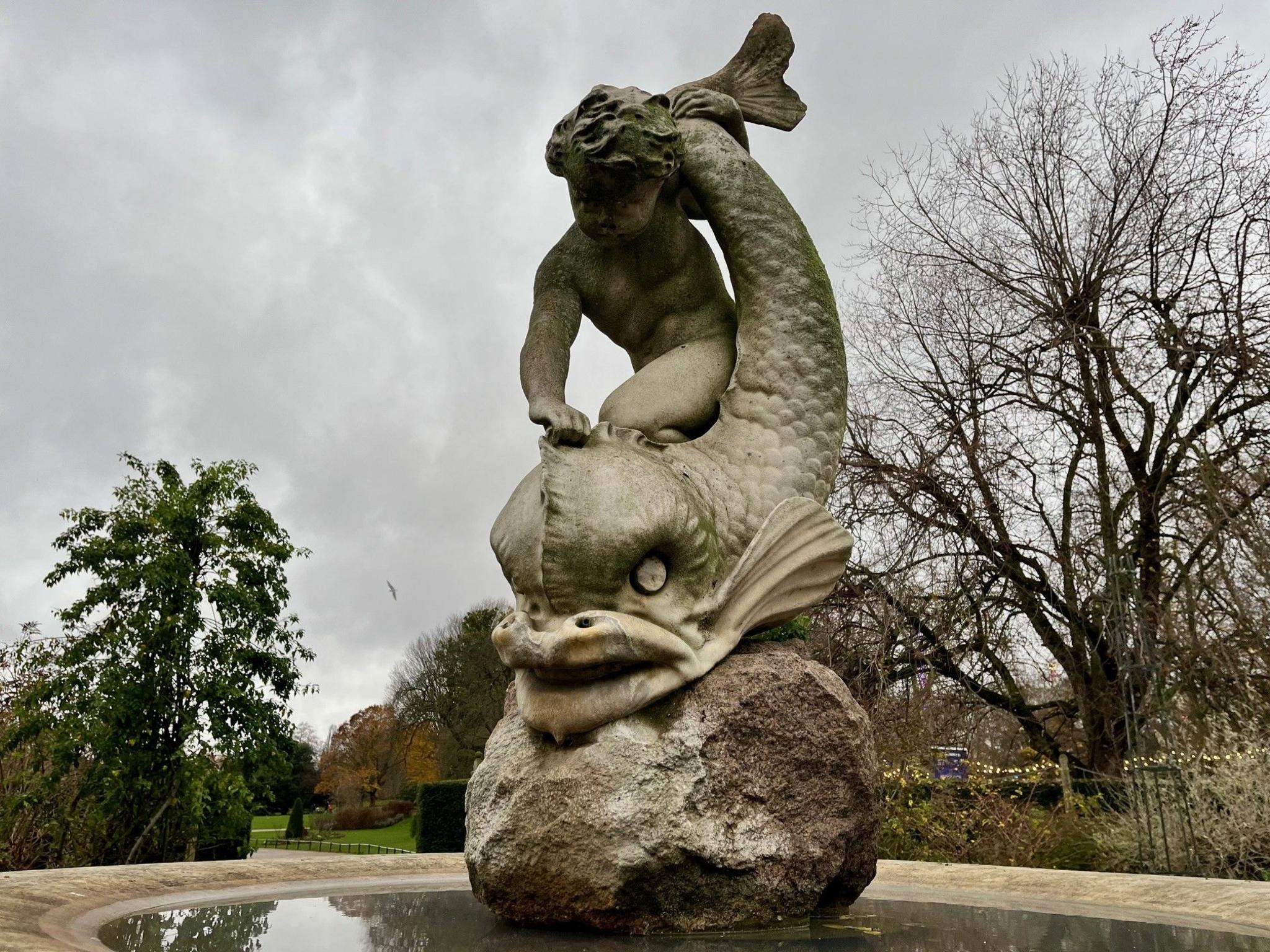
Flipper was having an off day
Further inland there's also the Victorians' own version of a child bullying a dolphin, in Hyde Park, which was sculpted in 1862.
Called The Boy And Dolphin Fountain, the term dolphin appears to be have been used in the loosest possible sense.
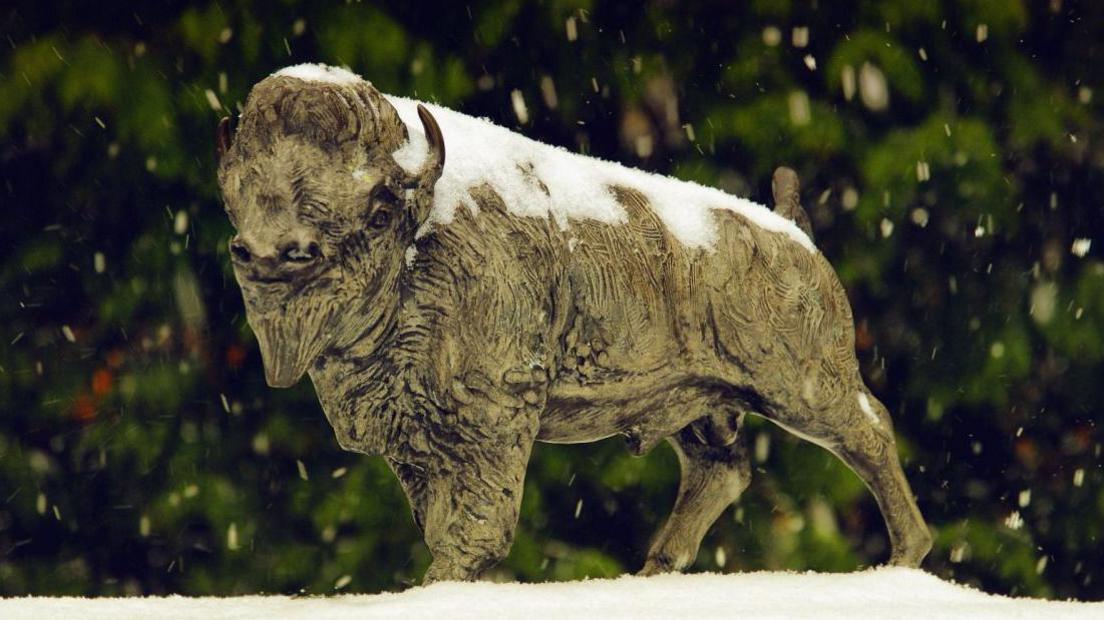
What are you looking at?
North-east of the city we go to what was once the stomping ground of notorious highwayman Dick Turpin.
Gillwell Park, near Chingford, was donated to the Boy Scouts in 1919 as a training centre and is home to the Bronze Buffalo.
Dating from 1926, it commemorates when a young scout came to the aid of Chicago-based publisher William R Boyce when he got lost during a trip to London.
After helping Boyce out, the boy turned down a tip, explaining he couldn't accept payment for helping someone as he was a scout.
This impressed the American no end, while also saving him a few bob, and as a result he founded the Boy Scouts of America, which subsequently donated the buffalo.
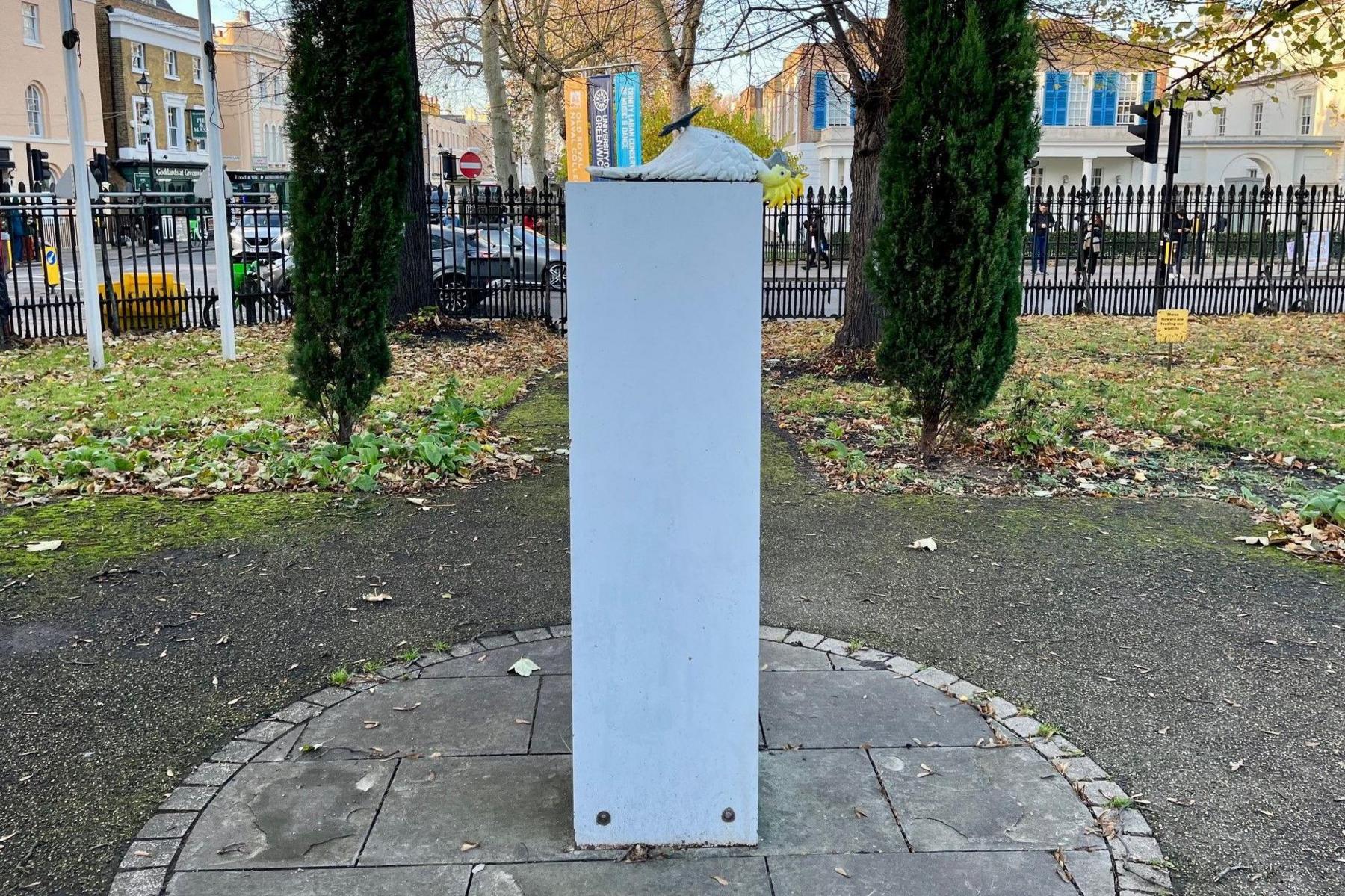
Polly ran out of suntan lotion a while back
And finally we end up in Greenwich, home of GMT, the birthplace of Henry VIII and the spot to see a representation of a tropical bird lying flat on its back on a large steel plinth.
Called Unwanted Gift, it was created by the artist John Reardon in 2009 and can be found near the National Maritime Museum.
Also known as Monument for a Dead Parrot, some have suggested it references the famous Monty Python sketch, although the bird in question appears to be more sulphur-crested cockatoo than Norwegian blue.
Either way, it's unlikely to be pining for the fjords.
Listen to the best of BBC Radio London on Sounds and follow BBC London on Facebook, external, X, external and Instagram, external. Send your story ideas to hello.bbclondon@bbc.co.uk, external
More on London's animal art
- Published14 August 2024
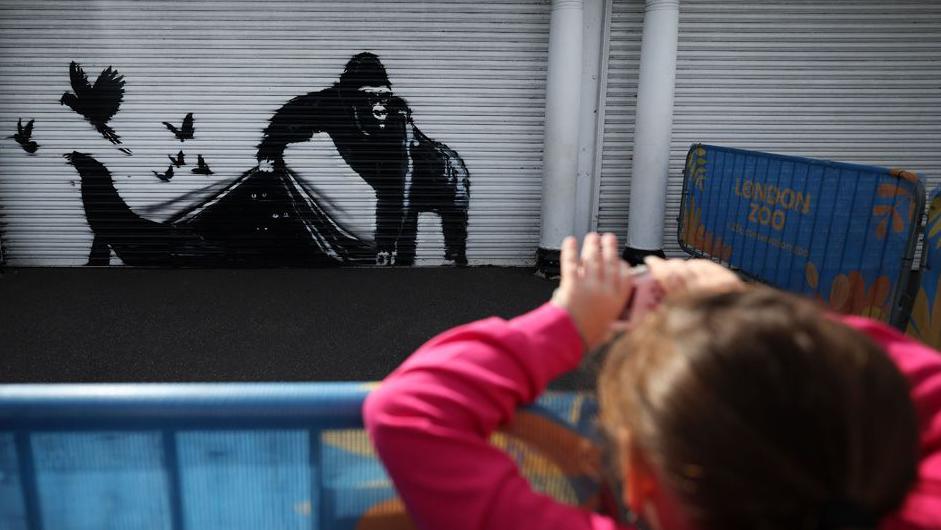
- Published22 October 2021
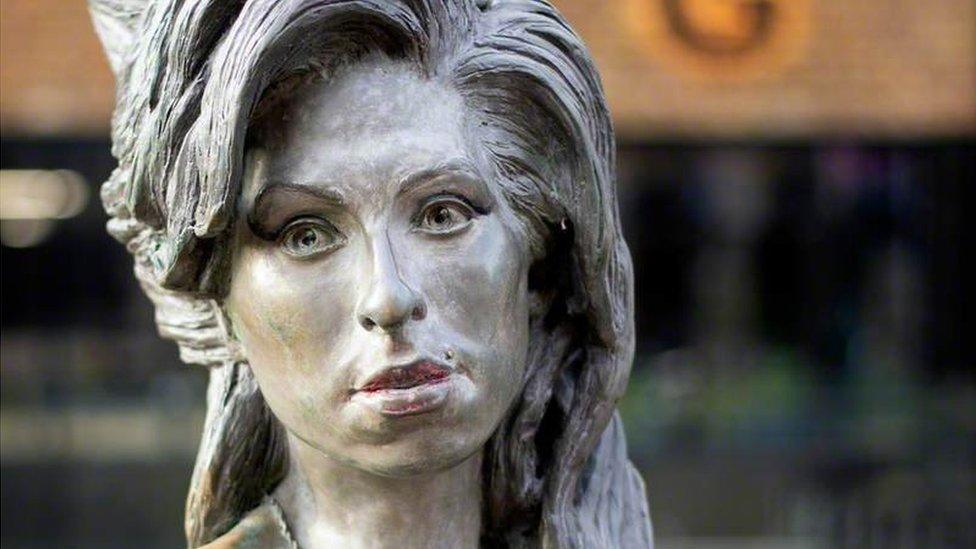
- Published26 March 2024
